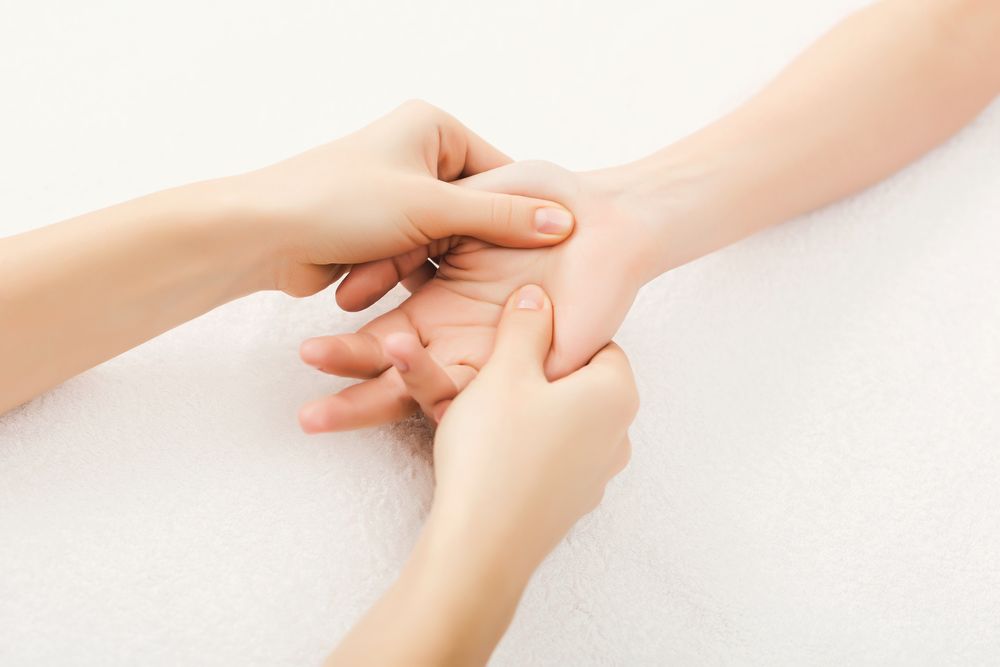Acupressure

Acupressure is a traditional therapeutic technique that involves applying pressure to specific points on the body. These points, also known as acupoints, are located along the meridians and are believed to be connected to various parts and functions of the body. According to acupressure theory, when the meridians are disrupted or blocked, it can result in physical or mental imbalances and health issues. By stimulating the acupoints through pressure, acupressure aims to promote relaxation, relieve pain, and improve overall well-being. During an acupressure session, pressure can be applied using fingers or specialized tools safely and painlessly. Different techniques such as pressing, kneading, or tapping may be used. The pressure is typically applied gently for few seconds or minutes, depending on the desired effect. Acupressure is believed to work by stimulating the body’s natural healing mechanisms, promoting circulation, and releasing muscular tension.
Acupressure has been used to address various conditions and symptoms. Some of the common areas where acupressure is believed to be helpful includes:
- Chronic Pain: Acupressure is believed to help manage chronic pain conditions such as arthritis, fibromyalgia, neuropathy, and lower back pain.
- Stress and Anxiety: Acupressure is often used as a relaxation technique to reduce stress, promote calmness, and alleviate symptoms of anxiety and tension.
- Emotional Well-being: Acupressure is sometimes used to support emotional well-being and address symptoms of depression, mood swings, and emotional imbalances.
- Boosting Immune Function: Acupressure may be used as a complementary approach to support immune system function and overall wellness.
- Allergies: Some individuals find relief from allergy symptoms, such as sneezing, congestion, and itchy eyes, through acupressure.
- Digestive Disorders: Acupressure may be used to support individuals with chronic digestive issues, including irritable bowel syndrome (IBS), Crohn’s disease, and chronic constipation.
- Respiratory Conditions: Acupressure techniques might be used alongside conventional treatment for chronic respiratory conditions like asthma, chronic obstructive pulmonary disease (COPD), and bronchitis.
- Sleep Disorders: Acupressure can be employed as part of a holistic approach to managing chronic sleep disorders such as insomnia and sleep apnea.
- Chronic Fatigue Syndrome: Acupressure may be explored as a supportive therapy for managing symptoms associated with chronic fatigue syndrome (CFS) and promoting overall well-being.
Moxibustion or Moxa


Moxa is a traditional Chinese medicine therapy that has been used for centuries. It involves the burning of dried mugwort herb (Artemisia vulgaris) near or on specific acupoints on the body. It is often used in conjunction with acupuncture or acupressure.
The dried mugwort herb can be prepared in various forms for moxibustion, including loose herb, compressed cones, sticks, or indirect moxibustion using a moxa stick or moxa pole. The moxa is lit and held close to the skin or placed on an acupuncture needle to generate heat.
The heat produced during moxibustion stimulates the acupoints, promoting the flow of blood in the body. It is believed to help strengthen the body’s defenses, improve circulation, and alleviate pain and discomfort.
Moxibustion can be used to address a range of conditions, including chronic pain, fatigue, arthritis, digestive disorders, asthma, menstrual irregularities, and certain types of infertility. It is also sometimes used in the treatment of breech presentation in pregnancy to encourage the baby to turn into a head-down position.
